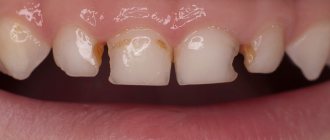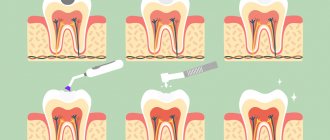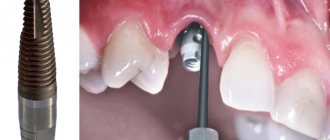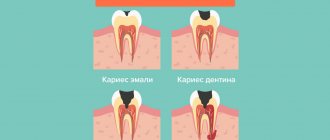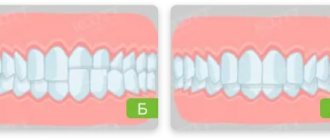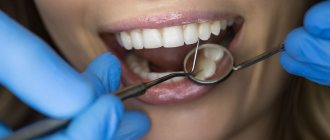Tooth extraction in dentistry is divided into simple and complex. When extracting a tooth with one root, such manipulation is considered simple. If the tooth has a complex root with several branches, then the procedure for removing it will be complex and is carried out using special tools and techniques.
In what cases is dental surgery difficult?
Complex manipulations regarding tooth extraction include the following situations:
- with disconnected roots that are excessively curved inward or directed in different directions;
- when the problem tooth is located in the affected bone;
- in the complete absence of a crown, when there is nothing to grab onto with forceps;
- if a filling was previously installed in the tooth, which can crack under the mechanical influence of forceps;
- when the tooth is impacted or dystopic;
- removing the "eight"
These are the main clinical features in which it is impossible to get rid of a diseased tooth using a standard simple procedure. Moreover, in each specific case the reasons for complex extraction may be individual.
Impacted and dystopic wisdom teeth
Impacted wisdom tooth
- this is a tooth that has not erupted; it is located in the bone tissue, in the gum. The general practice is that few dentists decide to remove an impacted figure eight, since it is a complex procedure.
In the clinics of the German Implantology Center, removal of impacted wisdom teeth is carried out as planned; our experience allows us to perform surgery of this level.
Why don't wisdom teeth erupt?
The wisdom tooth does not erupt due to the fact that it is dystopic: there is a neighboring tooth in front of it, which is in the way.
This wisdom tooth is usually tilted. Or there is absolutely no room in the jaw, it is located at the corner of the jaw: there is no place for it to cut through, there is no way.
Dystopic tooth
A wisdom tooth is a tooth that is erupting or has erupted incorrectly. Or it cannot erupt and occupies the wrong position in the jaw.
Typically, such teeth displace other teeth, deforming the jaw. It is impossible to treat them, and straightening them is also extremely difficult. In these cases, we remove the dystopic wisdom tooth. As a result of dystopia, cheek injuries may also occur due to chronic biting. Therefore, it is better not to postpone the removal of the dystopic eight “for later”.
Cases when complex surgery is necessary
It often happens that the only possible way to get rid of a defect formed by a complex tooth is to remove it.
Indications for this type of procedure are as follows:
- the formation of periodontal tumors and edema, accompanied by soreness of the mucous membranes and gums;
- numbness of the face resulting from damage to the nerve endings of a diseased tooth;
- with an increased risk of curvature of adjacent teeth;
- in the presence of diseases caused by improper positioning of the tooth.
Surgeries to remove problematic teeth are contraindicated for those who suffer from pathologies of the cardiovascular system, with poor blood clotting, patients who have undergone a hypertensive crisis, in the presence of infectious or viral processes in the body, as well as other individual contraindications.
Veneers and Lumineers
Veneers and lumineers can be used as aesthetic options for dentures on the front teeth. Veneers are very thin shells of porcelain that are given a color similar to the natural color of the patient's teeth. Veneers completely match the shape of a natural tooth. Such plates are attached to the front surface of the tooth.
Lumineers are transparent and very thin plates about 0.15 mm thick. Placed on the front surface of the tooth. This cosmetic procedure is non-invasive, quick, painless and long lasting.
These qualities determine the indications for the installation of veneers or lumineers:
- Crack and small chip of a tooth;
- Yellowing or darkening of tooth enamel;
- Uneven frontal surface;
- Crooked teeth.
Preparing for dental surgery
If a patient is faced with the removal of a complex tooth, then an experienced doctor will not perform such manipulations without prior preparation. An x-ray is required before the operation. This is necessary to clarify the location of the tooth in the bone, as well as to evaluate the tissues surrounding it.
When a patient has an inflammatory process, it is first cured by taking antibiotics.
Complications after pulling out problem teeth rarely occur, but to avoid them, the procedure should be trusted to a highly qualified doctor.
Implantation in the wisdom teeth area
Is implantation performed in the area of wisdom teeth?
In the area of wisdom teeth, implantation is not performed in any cases. Due to the fact that there is no space in the jaw to install implants in this area. And, if we look at the jaw, it opens more in the anterior section, and in the posterior section it opens least. If we place an implant, we will not be able to make a normal-sized crown and, accordingly, use these implants for chewing.
During implantation, in case of bone tissue deficiency, the tubercle of the upper jaw or the retromolar space in the lower jaw is used to fix the outermost implants. If there is an impacted eighth tooth in this area, it is removed regardless of the complexity of the operation, since it interferes with the installation of the implant.
How to remove complex teeth: basic techniques
In dentistry, various methods are used to eliminate a complicated tooth, the essence of which depends on the instruments chosen for manipulation:
- removal using forceps. Compared to
in other ways, this is considered the most gentle. This technique is used in cases where the integrity of the crown is preserved. The surgeon grabs the crown with forceps and loosens it in a circular motion until the tooth root ruptures from the alveolus, after which he pulls it out; - elevator extraction. If it is located outside the dentition, it is impossible to pull it out with ordinary forceps, then this technique is used. The instrument is inserted into the periodontal fissure and rotated, as a result of which the ligaments are torn. The tooth is not pulled out of the hole, but squeezed out;
- removal with a drill. This method is used to pull out teeth with multiple roots. First, the roots are separated using a drill and then each piece is removed separately. If a resorcinol-formalin filling is installed on a tooth, then a drill is also used to pull it out.
Which method is the best? Each has certain characteristics and is selected based on the condition of the tooth, the number and depth of its roots.
Dystropic tooth: indications for removal
A tooth with an incorrect location in the dentition relative to its neighbors is called dystrophic. It can take the place of another, spontaneously turn, change the angle of growth, which significantly interferes with neighboring teeth and leads to the formation of a malocclusion.
Indications for extraction of a dystrophic tooth are:
- swelling of the gums and pain;
- numbness of the face due to damage to nerve endings;
- pronounced curvature of adjacent teeth;
- periodontitis or chronic pulpitis;
- when, due to a problem tooth, it is impossible to perform prosthetics;
- if a dystrophic tooth is the cause of periostitis or osteomelitis.
The removal process itself is similar to the procedure for removing an impacted tooth.
Installation of prosthetic anterior teeth on the upper and lower jaws
The use of dentures for the lower and upper anterior teeth is almost the same from a practical point of view. The difference may lie in the fact that the installation of dentures for the upper teeth requires more attention from the dentist, since the upper jaw is somewhat less well supplied with blood than the lower jaw, hence healing here will take a little longer. And also, when a person smiles, the front teeth are the first to be seen from above, so it is necessary to pay more attention to the aesthetic side of prosthetics.
Extraction for acute and chronic inflammation
Quite often, the removal of a problematic tooth is accompanied by the presence of purulent foci, gum inflammation or periodontitis. In such cases, the doctor prescribes intensive therapy with the use of antibacterial drugs, and only after the inflammatory process has been suppressed is surgery to remove the tooth performed.
There are also situations when a tooth needs to be removed urgently. Only an experienced, highly qualified doctor can perform surgery in such cases.
Removal methods
Today, there are 4 techniques for extracting molars: simple, surgical or complex, atraumatic and according to the indications of an orthodontist. A simple method is usually understood as extracting a tooth that has completely erupted above the surface of the gum. In this case, removal occurs using special forceps. First, the tooth is slightly loosened from side to side and then removed.
The surgical method is intended for more complex cases, for example, to remove impacted or hard-to-reach, decayed teeth. In this case, the specialist cannot limit himself to using only forceps; a scalpel and other devices necessary for dissecting soft tissues will also come to the rescue. After such an operation, the resulting wound can take quite a long time to heal, which will cause a lot of inconvenience in everyday life.
Atraumatic removal is the most progressive method, which is painless and fast. First, the doctor administers the required dose of local anesthetic and then removes the tooth without using forceps. The cost of this procedure is quite high, but the risks of complications and infection in the wound are minimal.
Complex tooth extraction: when is it necessary?
Clinical indications for which the dentist prescribes complex tooth extraction are as follows:
- the presence of an unerupted wisdom tooth in the jaw;
- if the figure eight is incorrectly positioned;
- when removing molars with two or three roots;
- with a severely damaged or twisted root;
- in case of fusion of the tooth root with the jaw bone tissue;
- in the presence of a fistula or cyst;
- with excessive fragility of the crown due to treatment with resorcinol-formalin composition.
The operation itself consists of several stages and is carried out under the influence of powerful anesthetics.
FAQ
• Is it painful to remove a tooth?
Painless tooth extraction using local anesthetics is carried out by absolutely all dental clinics. But if “freezing” is not enough, then it is better to go to a private clinic that provides all types of pain relief.
• How do you know when a tooth needs to be removed?
If it is very loose or the crown is completely destroyed, then most likely it will be removed. In other cases, accurate diagnosis is necessary.
• Is it possible to have a tooth removed if you have a cold?
Surgical intervention is unacceptable in the presence of an acute infection, including acute respiratory infections or influenza. This is due to the high probability of infection of injured tissues.
• Is it possible to remove a tooth if you have sinusitis?
The operation is not performed during exacerbation of the disease.
Stages of complex tooth extraction
Complex removal surgery is carried out only after x-ray diagnostics, during which the shape, length and depth of the roots are determined. If the patient has inflammation, he is prescribed treatment with antibacterial drugs.
Technique of the procedure
Wisdom tooth removal is carried out in the following order:
- the gum is separated from the neck of the tooth by making an incision in the soft tissue;
- if necessary, the interroot septum is sawed or sections of bone tissue are cut out at the location of the tooth;
- then, using forceps, the tooth is rocked and pulled out of the socket;
- Sutures are placed on the gum.
Painkillers are not required after the procedure, since the effect of the anesthetics is still present.
Care instructions
Before the socket is tightened, you should not overheat the body, drink or eat hot or cold drinks, food, or chew on the operated side. You should not smoke, as nicotine constricts blood vessels and impairs wound healing. It is forbidden to lick a blood clot from the socket.
Antibiotics are prescribed for tooth extraction if the procedure was complicated. They are necessary to prevent tissue infection and the development of inflammatory processes. For the same reason, it is recommended to rinse your mouth with antiseptics. In this case, there is no need to rinse intensively, since it is possible to wash out the blood clot from the socket. Analgesics can be used to relieve pain.
The healing process of the hole after a complex removal
Basically, tissue healing occurs after 7-10 days. It should be noted that this period is quite difficult for the patient. As soon as the effect of the anesthetics stops, aching pain immediately occurs. To eliminate it, you should take pain medication.
The swelling and redness that appears will decrease every day. If there is slight itching in the socket area, this indicates intensive tissue restoration. Removal of sutures after healing is not required since they “dissolve” on their own.
During the regeneration period after removal, it is very important not to disrupt the integrity of the blood clot formed in the socket. To do this, you need to follow a few simple rules:
- during the first 2-3 hours after surgery, do not consume any drinks, much less food;
- Under no circumstances should the well be heated, cleaned or washed;
- do not rinse your mouth for 24 hours after removal;
- When eating food, you need to chew it on the opposite side in relation to the hole.
If you follow these recommendations, the tissue will soon recover without complications.
Possible complications
When using an elevator, an adjacent molar or premolar may be displaced or even broken. In the upper jaw, it is possible to push a fragment into the maxillary sinus. Fractures of the lower jaw are very rare.
Immediately after surgery, swelling occurs, and after the anesthetic wears off, pain occurs. Such phenomena disappear within one or several days, depending on the complexity of the procedure performed. Temporary numbness of soft tissues in the operated area, increased temperature, and bleeding are possible.
Pus in the hole after tooth extraction appears due to alveolitis. When a blood clot, which protects against the entry of bacteria and food, falls out of the socket, the pain intensifies and inflammation develops. In this case, you need to contact the doctor who performed the operation.


